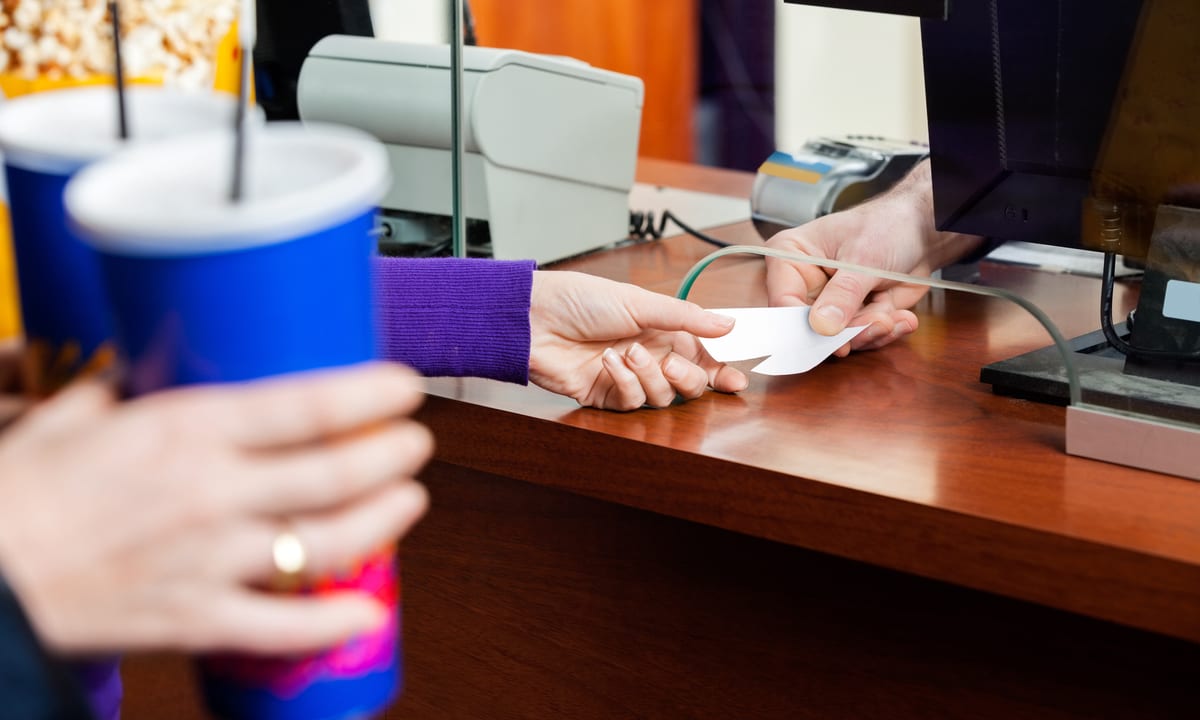‘Wonder Woman’ Shows Nothing Makes The Big Bucks Like The Big Screen

“Wonder Woman 1984” brought in $16.7 million in U.S. box offices this past weekend in its debut.
Despite 60 percent of U.S. movie theaters still being shuttered due to the coronavirus, Warner Bros.’ latest iteration of superhero flick “Wonder Woman 1984” (WW84) defied skeptics and pandemic-era precedent and booked the best opening weekend numbers the industry has seen in almost a year.
With just 2,100 screens showing the film versus nearly 4,800 that showed the previous Wonder Woman version in 2017, WW84 was able to set a short-term record of $16.7 million box office receipts. Pair that with Warner’s concurrent streaming of the film on HBO Max as well as international revenues from 42 other countries, and the global receipts top $85 million so far.
While that is only about one-tenth what the first Wonder Woman film ultimately grossed, everything is different today, right down to the heroine’s stars and stripes outfit, which The New Yorker described as head-to-toe gold metal that resembles a hood ornament from a 1930’s Buick.
No matter, because WW84 is as much a business model case study as it is about fighting crime and righting wrongs, and on that front it goes where no other film has gone before by sharing the limelight of its big screen debut with in-home consumers of the little screen version.
Movie-nomics
As much as the box office is out there, the streaming viewer numbers and economics of this unprecedented pairing are unavailable and not broken down. That’s partly due to the fact that the film was included free with an HBO Max monthly subscription. However, the decision by Warner Bros. to already fast-track the release of “Wonder Woman 3” speaks volumes as to the studio’s reaction.
“As fans around the world continue to embrace Diana Prince, driving the strong opening weekend performance of Wonder Woman 1984, we are excited to be able to continue her story with our real life Wonder Women — Gal and Patty — [actress Gal Gadot and director Patty Jenkins] who will return to conclude the long-planned theatrical trilogy,” said Toby Emmerich, chairman of Warner Bros. Pictures Group.
Big Screen Rebound
As much as Warner is fast-tracking the production of version three, there’s no telling how quickly theater restrictions will be lifted as the COVID vaccine makes its way through the U.S. and the virus is brought under control.
Even then, many have questioned how much market share traditional big-screen theaters will ultimately recover, and how much they might cede to the streaming services — many of which are either directly or indirectly linked with the major motion picture studios. The answer seems to range somewhere between “it depends” and “not much.”
While WW84 is being lauded for its strong debut, you cannot lose sight of the fact that a $17 million launch would have been considered a disaster in the pre-COVID era. Same for total run revenues of a billion dollars or more. Until Wonder Woman — or any other big budget film — can deliver big dollar returns, industry watchers say the tried and true movie theatre model will still be the proven business model of choice.
To that point, movie industry consultant David Gross of FranchiseRe told Variety his models project WW84 will top out around $180 million, which would be only about one-fifth of what the first film raked in. Gross also noted that prior to a string of coronavirus delays that ultimately pushed WW84’s launch back to Christmas day, it was originally pegged to be a billion-dollar earner.
Can Theaters Hang On?
Like so many other businesses, many movie theaters are simply trying to hang on and scrape by until life returns — at least somewhat — to the way it used to be. In the case of industry leader AMC, which operates 960 theaters and 10,700 screens throughout the world, the past year has been one of borrowing, improvising and adapting to ever-changing local market conditions.
For example, in October AMC lauded the reception of its Private Theatre Rental concept that allowed a group of 10 or 20 friends and family members (depending on local rules) to have their own private screening in a sanitized theatre for $99. The beta test brought in 110,000 people, the company said.
“It’s unprecedented for AMC to receive 110,000 contacts in four weeks about a private theatre rental, based only on word of mouth and organic publicity, and we are excited about and appreciative of the interest this has sparked among AMC guests,” said Elizabeth Frank, EVP worldwide programming and chief content officer at AMC.
But then, just one month later, the reality of cinematic struggles came to the fore again when AMC announced that it had secured a $100 million debt financing deal in order to “bolster its near-term liquidity.”
While the need for short-term financing can be viewed in many ways, in the case of AMC it seems clear that, if nothing else, it’s a bet that the big screen experience is not about to be streamed out of business.
